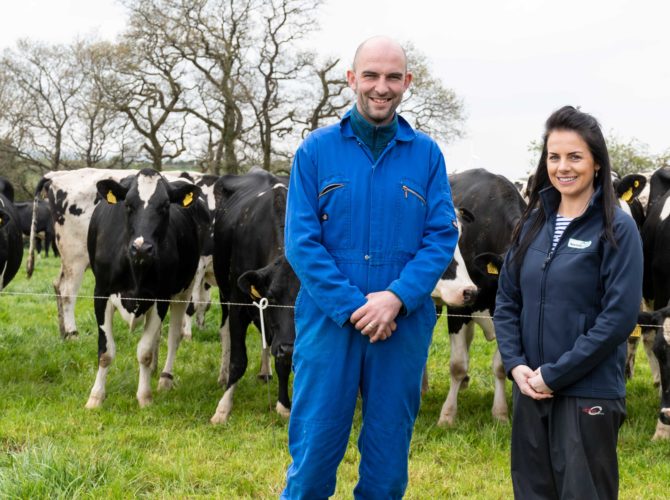Maximise Intake to Maintain Performance at Grass.
10th May 2022

Dry matter intake is the key driver to maintaining performance at grass and can fluctuate dramatically due to a multitude of factors. It is essential to take a flexible approach when considering potential ‘litres from grass,’ considering grass quality on the farm and variable weather conditions.
Under optimum grazing conditions, cows have the potential to achieve up to Maintenance + 20 litres from good quality grass. However, 16 – 17 litres from grass during the early grazing season is a more realistic figure for a typical grazing herd. It is important to remember cows will have a greater energy expenditure at grass, due to walking further on a daily basis.
Factors Affecting Intake:
- Sward Digestibility
Grazing covers exceeding 3200kgDM/ha will result in decreased digestibility. This has a detrimental impact on intake as cows will graze more selectively, resulting in poor grass utilisation and higher residuals.
Target residuals of 1700kgDM/ha are considered optimum, especially for higher yielding cows. Forcing them to graze down much tighter will compromise intakes and result in a loss of milk production.
- Dry Matter of Grass
In showery weather, grass dry matter can drop by 3% resulting in a DMI reduction of 1kg, which represents a loss of two litres of milk.
Proactive adjustment of concentrate feeding on wet days will be essential to maintain performance – and it is imperative not to wait until the bulk tank has dropped to react, as it is normally too late at this stage.
Nutritional Considerations:
- Milk Urea Nitrogen (MUN)
Recent analysis has shown grass protein in excess of 20% on farms across Northern Ireland, with at least 80% of this being rumen degradable protein (RDP). The rumen microbes are unable to use this excess RDP and as a result there will be elevated urea levels excreted in milk and urine. A MUN exceeding 35mg/dl will indicate inefficient use of dietary protein and will adversely affect milk production and fertility.
A 14 – 16% crude protein dairy nut will meet the dietary protein requirements for cows at full time grass. Aim to maximise time between sowing nitrogen and the next grazing rotation to ensure fertiliser sowed is being properly utilised.
- Buffer Feeding
Young, leafy grass is typically high in sugars and oil, with a low fibre content. Consequently, the grass will be highly fermentable, resulting in an increased risk of acidosis and milk fat depression. Suboptimal rumen pH will also have a negative effect on magnesium uptake, so grass tetany can be more of a risk.
Providing a buffer feed prior to the evening milking can help improve rumen retention rates and stabilise rumen pH. This will help to maintain butterfat levels and allow cows to use the grass more effectively.
A weekly ‘Grass Monitor’ will be published on Fane Valley Feeds Facebook page during the grazing season to provide updates on grass quality and management considerations.
For more information or technical support this spring, please contact Laura McConnell on 079 7672 3099 or your local Fane Valley Feeds Sales Specialist.

